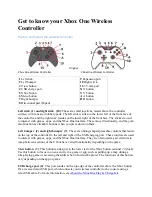
Master-Slave 06/2005
Danaher
Motion
In the unusual case that the master position is located exactly on one of the
master position points, the slave position is the corresponding point of the
master/slave point-pair. When the master is located between two points, the
MC uses
linear interpolation
to calculate the position.
Cam tables are
incremental
in one aspect and
absolute
in another. Within
the cam table, the positions are absolute. Suppose you want a cam table
with 5 points with each point of the master separated by 10 units, and slave
positions separated by 20 units. The table (with the assumed name CAM1)
is:
CAM1.1 = (10, 20)
CAM1.2 = (20, 40)
CAM1.3 = (30, 60)
CAM1.4 = (40, 80)
CAM1.5 = (50, 100)
The master and slave positions are absolute within the table. This method is
not a valid way of entering cam table items, but it is an illustration of the table
entries. Creating cam tables is covered later.
Cam tables are incremental with reference to the start point. The start
position in a cam table is always offset to the master and slave positions
when the cam table is enabled. The operation of the table above is identical
to the table below where the point pairs are adjusted to allow the first point to
change from (10, 20) to (0, 0):
CAM1.1 = (0, 0)
CAM1.2 = (10, 20)
CAM1.3 = (20, 40)
CAM1.4 = (30, 60)
CAM1.5 = (40, 80)
Cam tables can be specified to command
net motion
. The start and end
points of the cam table are different. The reason cam tables are incremental
or decremental with regard to starting points is to allow a cam table to
generate net motion while allowing it to be called many times in succession.
Consider the following graph that shows just such a cam table with net
motion executed for four cycles:
Each successive cycle ratchets the slave position up. The starting position in
the table cannot be equal to the actual slave position or the cam slave
position (which is fixed in the cam table) and the actual slave position (which
is ratcheting up each cycle) does not match for more than one cycle.
The distance to be moved is specified indirectly through the
cam table data
.
The total displacement of one cycle of the master is the master position of
the last point pair less the master position of the first, divided by
GEARRATIO
.
110 Rev
E
M-SS-005-03l
















































